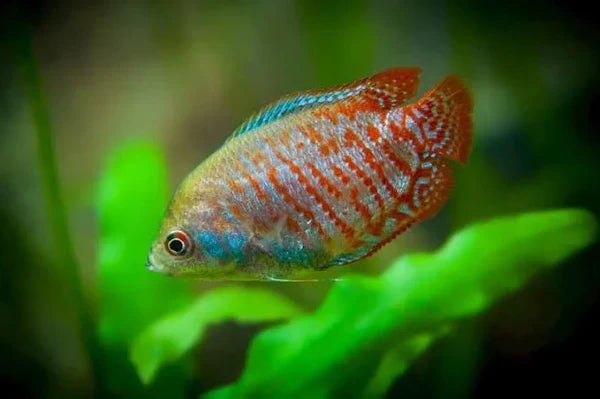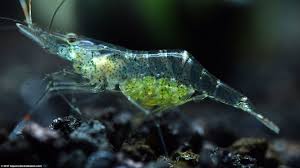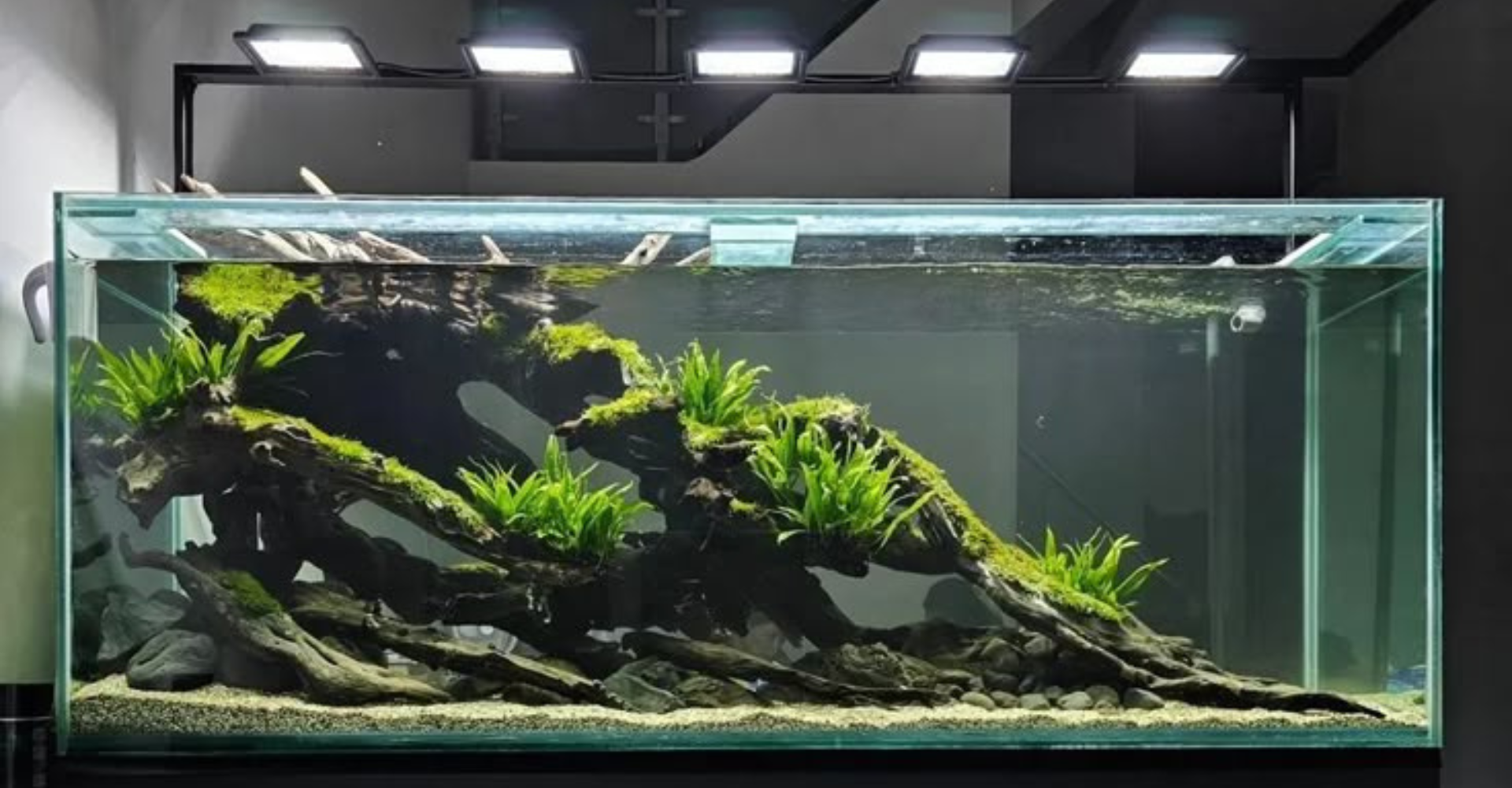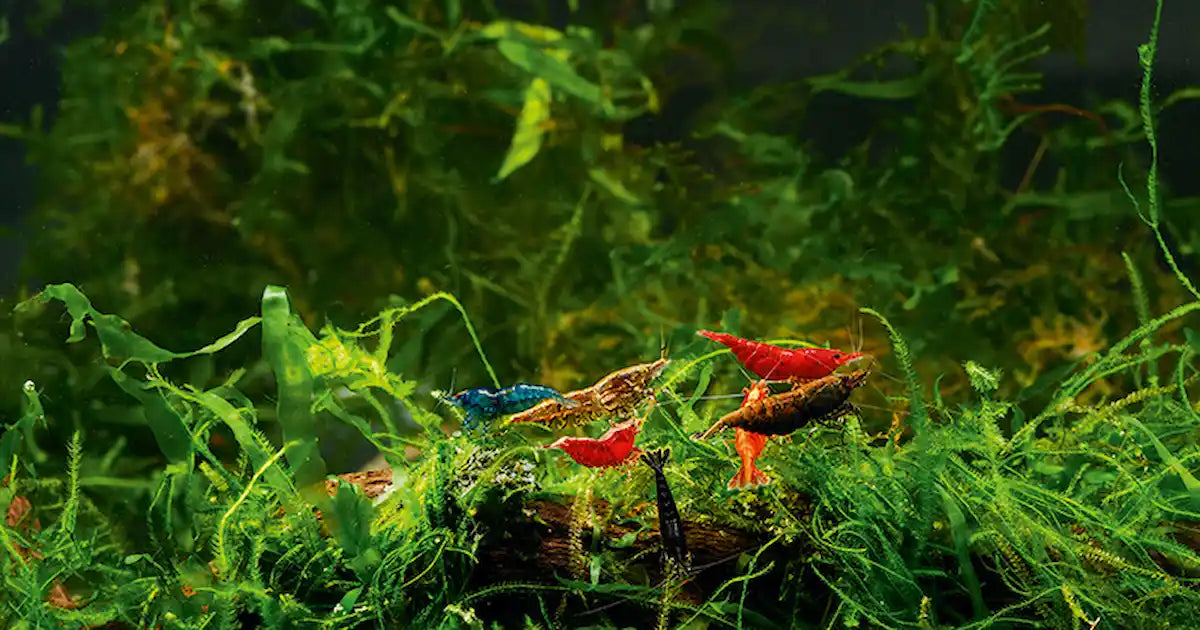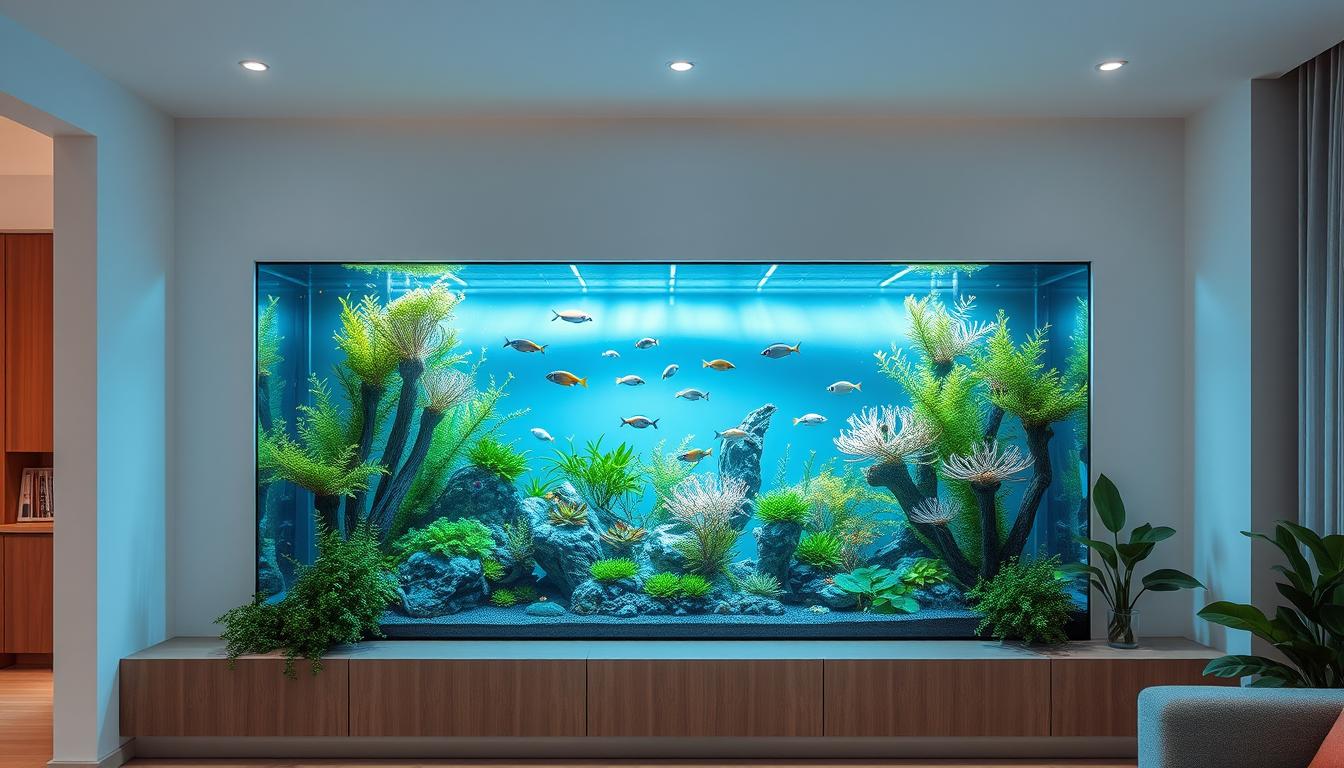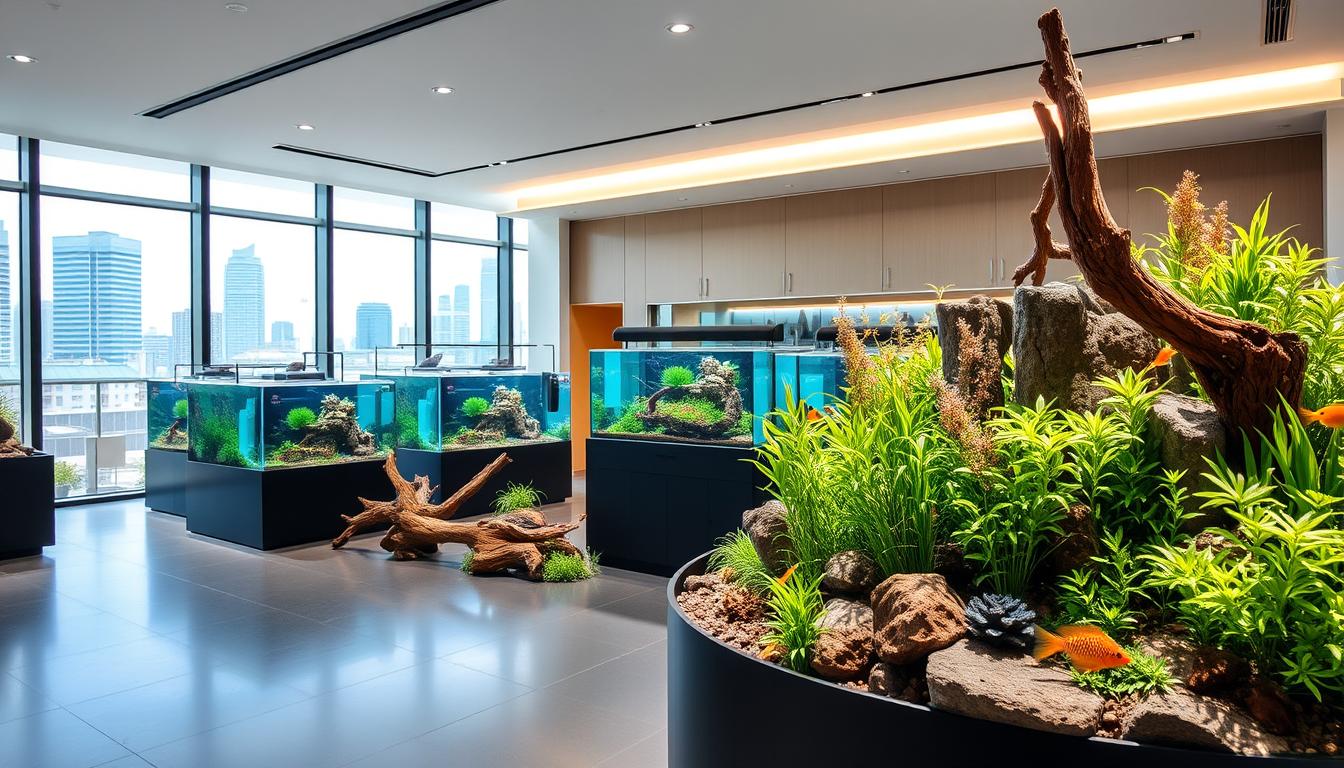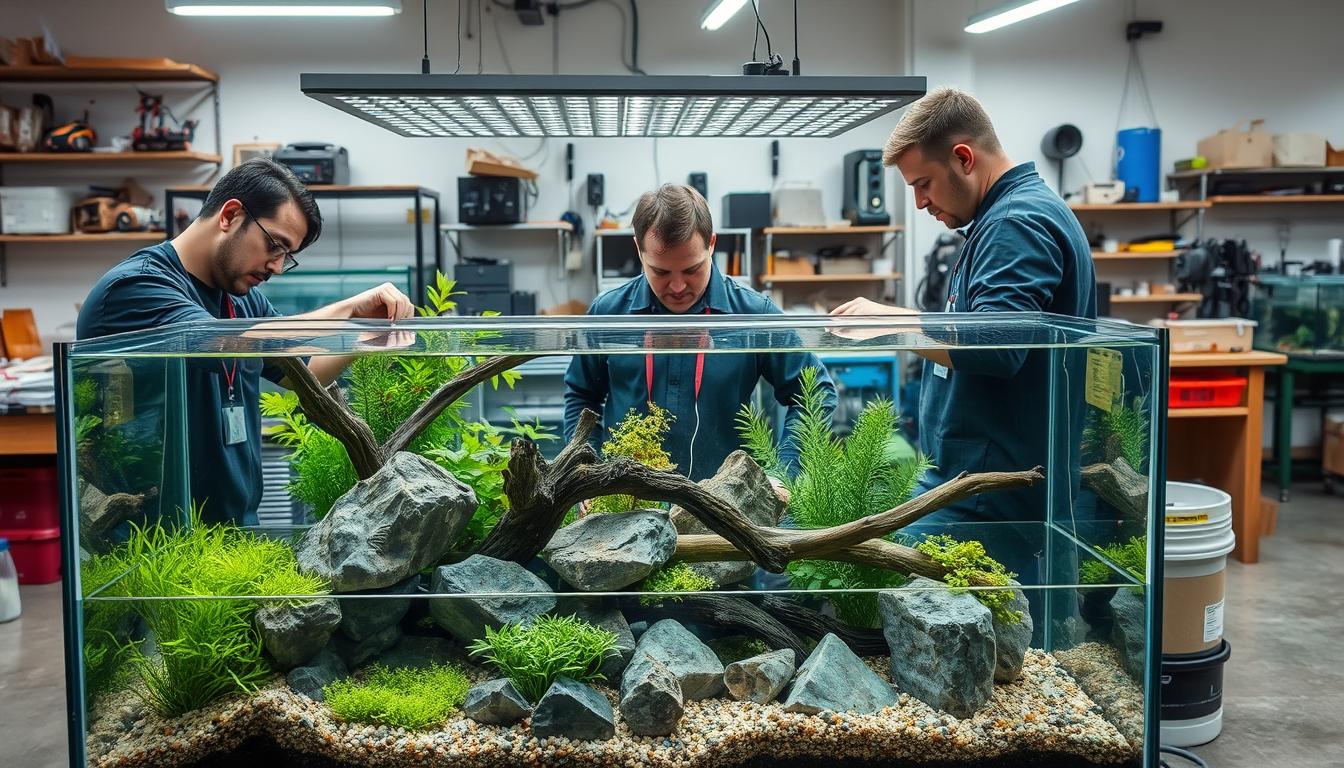Do freshwater aquarium snails give you a headache when they suddenly appear in your aquarium or bring great benefits to your tank mate community? This article gives you a comprehensive perspective on snails in freshwater aquariums, at the end of this blog, you’ll have your answer on whether to keep them in the tank or not?
Golden Apple Snails.
Golden Apple Snails, scientifically known as Pomacea canaliculata, are fascinating creatures that can thrive in a wide range of temperatures, ideally between 65 to 82°F (18 to 28°C), and prefer a pH level of 7-8 to ensure a safe and healthy environment for them in the tank.
To provide them with ample space for movement and comfort, it's recommended to house them in a tank of at least 10 gallons, although larger tanks are even better.
To keep these freshwater aquarium snails safe in the tank, it's essential to be mindful of a couple of important specifications. One crucial aspect is their habit of munching on live plants, which could pose a problem for aquascapes enthusiasts. Therefore, it's advisable to avoid incorporating live plants in the tank if you want to maintain a lush, green environment.
However, the more significant concern with Golden Apple Snails is their potential invasiveness. Unfortunately, they have been reported as invasive species in various regions, notably in parts of Asia and the Southeast of the USA. Escaping from captivity, they have established themselves in the wild, disrupting local ecosystems and causing ecological harm.
In light of this, it is of utmost importance to act responsibly as pet owners. Under no circumstances should these freshwater aquarium snails or any other aquarium plants or animals be released into the wild.
Doing so can lead to unintended consequences, disturbing the natural balance of ecosystems and threatening native species. Let's be conscientious caretakers and preserve the natural beauty and diversity of our world.
Despite the challenges posed by their plant-eating tendencies and invasive potential, Golden Apple Snails can still make captivating pets in tanks devoid of live plants.
By providing them with a safe and appropriate environment and ensuring they remain within captivity, we can appreciate and enjoy the unique charm of these snails without negatively impacting the environment. Let's take the necessary precautions to enjoy these fascinating creatures responsibly and sustainably.
Read more article: Apple Snail vs Mystery Snail: Know the Differences
Mysterious Snails.
Your snails are like little superheroes for your tank! They work their magic by boosting the good bacteria in your aquarium, creating a healthy and happy environment for your fishy friends. Plus, their vibrant colours add a pop of excitement to the underwater landscape, turning your tank into a true visual delight!
These adorable snails pals are the ultimate clean-up crew. They take their job seriously and tackle those pesky harmful substances on your tank's glass walls and even the bottom of the aquarium. It's like having tiny superheroes on a mission to keep your tank spotless!
They munch away on leftover fish food, unfiltered fish waste, and those pesky rotting leaves, making sure your tank stays fresh and clean. Talk about the dream team for a tidy aquarium!
Some snails are experts in cleaning up the substrate – that fancy word for the material on the tank's bottom. They're like little magicians, making all that yucky detritus disappear with their munching magic!
Say goodbye to endless tank-cleaning sessions, my friends. With these helpful snail buddies around, you'll have way less gunk to deal with. They've got your back, so you can spend more time enjoying the underwater wonderland and less time scrubbing away.
Adding freshwater aquarium snails to your aquarium is support to you – it's a win for your fishy friends too! These cheerful critters create a happy and healthy home for everyone, and they do it with a splash of colour and a whole lot of charm.
We've been deep researching an article about: The Secret Of Purple Snails - Are They Really Mysterious As Their Name?
The Nerite Snail.
Nerite snails are one of the best starter snails because they’re very good at keeping the tank clean.
They consume algae at rates that beat almost every other snail. They also have lovely stripes, making them perfect for adding zing to the décor of your aquarium.
Because Nerite snails breed surprisingly fast, many pet fish owners don’t add them to their tanks. But that problem’s solved with these nerite freshwater aquarium snails. They only reproduce in brackish water, so they’re perfect for freshwater aquariums.
Another good quality about these nerite snails is that they’re very friendly. They’re compatible with most live plants, fish, and shrimp. They’re definitely great to add to liven up the fish party in your aquarium.
You want to know clearly about “unique appearance snails” like Nerite snailsl, they not only make your tank more gorgeous but also help eat algae, and we can’t deny they are the most popular freshwater aquarium snails.
You can find more information through this blog here: ANTI - ALGAE IN YOUR AQUARIUM TANK - Nerite Snails (YOU SHOULD KNOW SOONER)
Ramshorn Snails.
If you're searching for an aesthetically pleasing snail species, Ramshorn Snails are your go-to choice. These captivating snails come in a variety of colours, including black and red.
For a brilliant pop of color, you can add a few Bright Red Ramshorn Snails. These snails add a fiery red appeal to any tank and are perfect for colorful backgrounds and fish.
The bright Ramshorn Snails are some of the hardiest snails. They aren’t picky about their water parameters and reproduce easily.
If you don’t want overpopulation, it’s recommended to closely track their breeding patterns. Alternatively, you can buy other snails that eat them to naturally handle the problem.
Not only do they beautify your tank, but they're also nature's little clean-up crew. Ramshorn Snails excel at tidying up algae, decaying matter, and even rotting leaves.
Plus, some aquarists even keep them as pets due to their unique charm.
Wow, Ramshorn Snails is one of the freshwater aquarium snails we are raving about! They not only have a lovely appearance but also their friendly character and they're an active cleaner in your tank.
If you need more info about Ramshorn Snails, you can read 19++ THINGS YOU NEED TO KNOW ABOUT RAMSHORN SNAIL (I WISH I KNOW SOONER!!)
Malaysian Trumpet Snails.
Among the most commonly encountered snails in the aquarium world, Malaysian Trumpet Snails are a favourite. These versatile creatures are experts in maintaining tank cleanliness and are incredibly easy to care for.
Malaysian Trumpet snails make up the most common freshwater aquarium snails in tanks. These snails are arguably best at removing waste compared to others.
Malaysian Trumpet Snails are only interested in their food, so living plants are safe. In fact, the waste they produce from eating actually acts as a fertilizer for your plants.
Their small size allows them to thrive in tanks of any size, making them an excellent choice for both beginners and seasoned aquarists.
Just remember not to go overboard with feeding, as these snails have a knack for multiplying rapidly. Who doesn't want a few extra freshwater snails for free?
They are easy to care for and available at low prices, making them a great option.
We write a lot of articles about the type of snail, fish tank snails, and Malaysian Trumpet Snails is no exception. They are experts in eating algae and we have a case study about 101 SECRET ABOUT THE MALAYSIAN TRUMPET SNAIL YOU CAN NOT MISS IT OUT.
So you think you don’t need to read that article? The good news is you should read them at least once (I bet maybe twice), because that is all the information you need in only an article.
Bladder Snail.
This common freshwater snails comes from the Physidae family and is known for its brown, bulbous shell with speckled spots. They stay fairly small at less than 1 inch (2.5 cm), which makes them small enough to clean out the nooks and crannies in your tank.
Bladder freshwater snails are sometimes confused with larger pond snails, which can grow to 2–3 inches (5–8 cm) and like to eat aquarium plants. They are not fussy about water parameters and can handle a wide range of pH and temperatures.
Many people refer to them as “pest snails” since they are simultaneous hermaphrodites that can fertilize themselves. The eggs look like tiny, white dots encased in a blob of clear jelly and can be found on the tank walls, plants, and other surfaces. If you experience a population explosion in bladder snails, you may be feeding the aquarium too much.
Consider decreasing the amount of food going into the tank, managing algae growth, and gravel vacuuming more often to remove excess organics. Once the food sources dry up, the freshwater snails population will stabilize.
Freshwater Mussels.
Want a unique addition to your tank that doubles as a natural filtration system? Look no further than Freshwater Mussels! These fascinating bivalves are equally comfortable in tropical and cold water environments.
Freshwater Mussels effortlessly filter the water, removing pesky particles like detritus and single-cell algae. By choosing these incredible mussels, you'll enjoy crystal-clear water and a healthier ecosystem for your aquatic friends.
Caring for Your Snail Superstars.
To ensure your freshwater snails live their best lives, it's essential to create an ideal environment for them. Maintain excellent water quality, ensuring it contains adequate minerals and a pH close to neutral. Choose tank companions that coexist harmoniously with aquarium snails, and select the right substrate to support their needs.
Feeding your freshwater snails is a breeze, as they happily munch on algae, detritus, and leftover food. You can occasionally supplement their diet with bottom-feed pellets to keep them well-nourished.
Remember, snails are temperature-sensitive, so keep your tank between 72℉ and 82℉ for optimal snail happiness. Regularly monitor their health by observing their movement, color, and cleanliness. Any signs of illness should be addressed promptly to maintain a vibrant and thriving aquatic community.
How To Care.
Most types of freshwater snails are really easy to care for and will thrive in your fish tank without any extra effort from you. They will do best in a healthy and stable environment though, so here’s some basic information on how to provide them with a great home.
How To Set Up Your Tank.
Aquarium and pond snails can be kept in just about any tank size, although the larger species obviously need more space. Assassin snails, for example, will do best in larger tanks with more stable conditions.
Good filtration is very important for keeping healthy aquariums. Although many snail species can survive in lower water quality conditions, running a good quality filter will keep the water looking and smelling pristine. Filtration is also super important if you plan on keeping other animals like shrimp and fish.
To keep the water temperature stable in your aquarium, you will need to install an aquarium heater. Make sure you set your heater to a temperature that your type of snail is comfortable in. A thermometer is also very useful because it allows you to monitor the water temperature in your tank.
Some types of freshwater snails, like nerites, for example, will often crawl out of the water and can easily escape your fish tank snails. Make sure you have a secure lid/hood over your tank to prevent them from escaping and getting lost or hurt.
What To Feed Them.
Most freshwater snails will live happily in your aquarium without needing to be fed specifically. Here’s what they eat:
- Uneaten fish food
- Dead plant matter
- Soft algae
- Fish waste
This makes keeping your fish tank snails happy and well-fed really easy. If you don’t have enough of those food sources available to your snails, you can also feed them some bottom feeder tablets, or even some blanched green vegetables.
Providing an extra food source is definitely recommended if you keep a lot of algae-eating snails like nerites and they run out of food. If this happens, it is even possible to grow algae for them to eat.
How Can They Get Into Your Tank?
The first thing to note is that fish tank snails can get into your aquarium as adults, or as eggs. Any time you add something to your aquarium that has been in another aquarium, you run the risk of adding snails.
This includes the tanks at your local fish store or even your friends’ tanks. Adding things to your tank from wild sources like ditches, lakes, or rivers is also a risk.
Snails and their eggs are usually attached to new plants, ornaments, gravel, or basically anything from another tank. Freshwater snails are really tough as well, so even if an object has been outside of a tank for some time, the snails can still survive.
Another way that fish tank snails can arrive is when you introduce new fish to your tank. Sometimes a little gravel gets scooped up and bagged along with your new fish, and sometimes a snail or two can be part of the deal.
Tips To Keep Them Out
Adding new plants is one of the most common ways that pest fish tank snails are introduced to fish tanks. Before adding a new plant to your aquarium snails, check it thoroughly and rinse it off, removing any snails or eggs you might see.
Next, prepare a bleach dip consisting of 1 part bleach to about 20 parts water. Dip soft plants in the solution for no more than a minute and firm plants for up to two minutes. Afterward, rinse the plants off carefully with conditioned water before planting them out.
A much easier way to safely add new plants is to buy tissue culture specimens. These are plants that are carefully grown under special lab conditions to ensure that they are pest-free.
Get Ready to Join the Snail Party!
With the Expert fish tank snails at Micro Aquatic Shop, you have an incredible opportunity to introduce these captivating creatures into your aquarium. Not only will they keep your tank sparkling clean, but they'll also bring joy, beauty, and a touch of whimsy to your aquatic world. Embrace the magic of snails and experience the increasing movement, color, and countless benefits they offer. Visit Micro Aquatic Shop today, and let the snail adventure begin!







